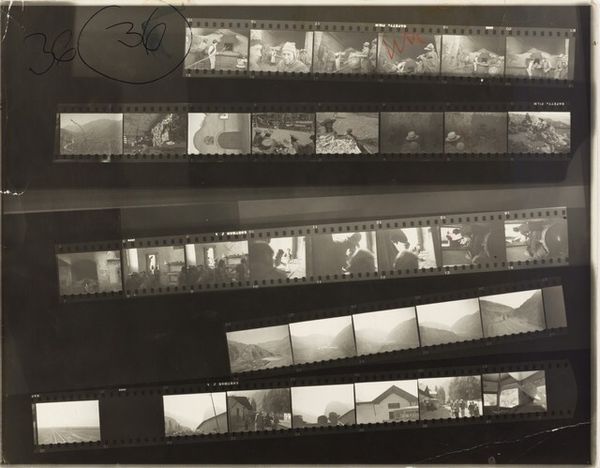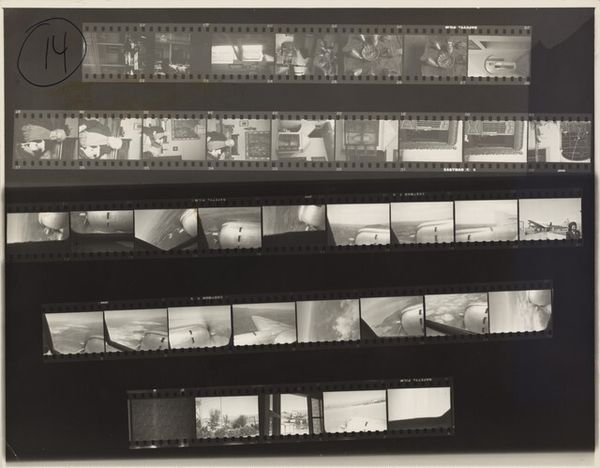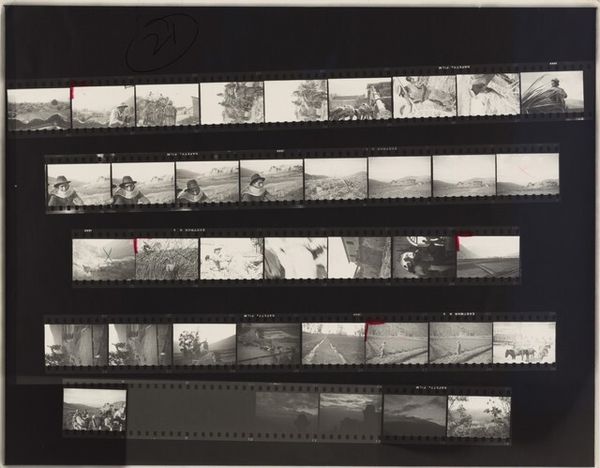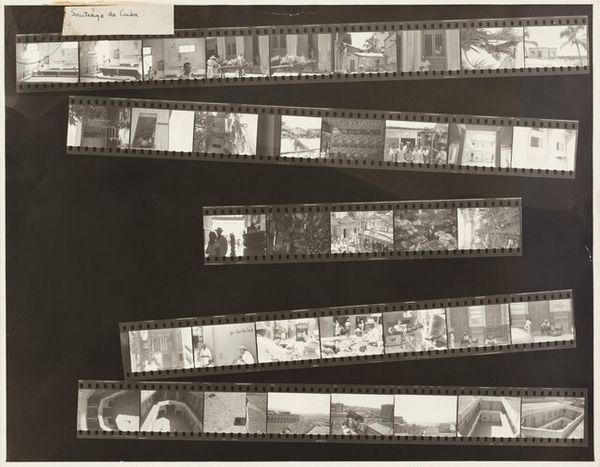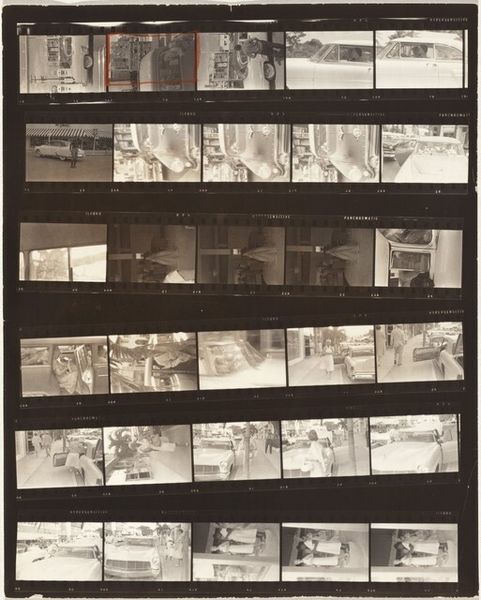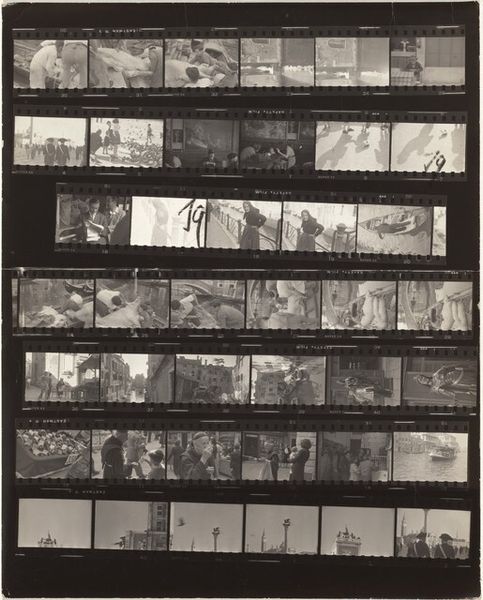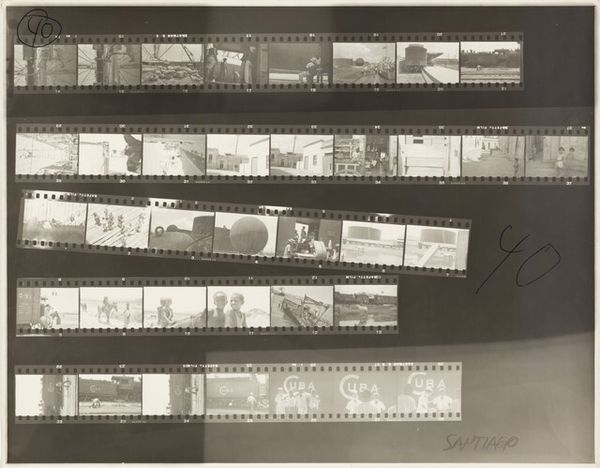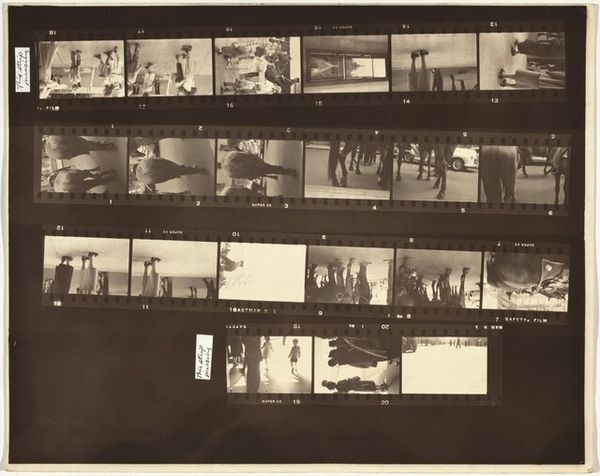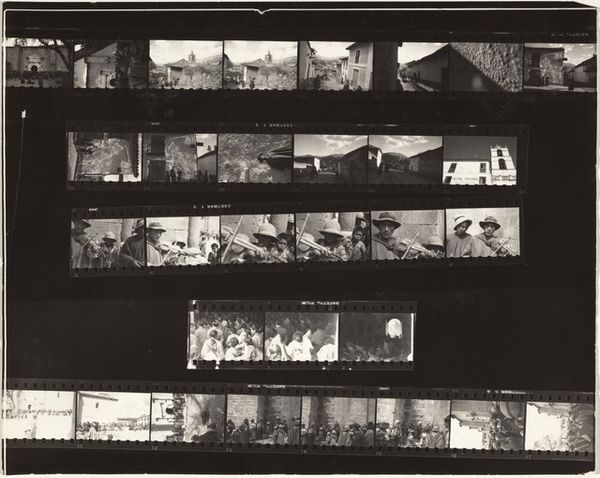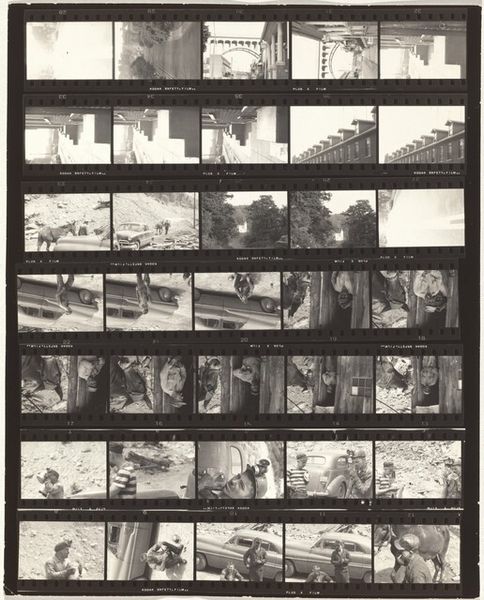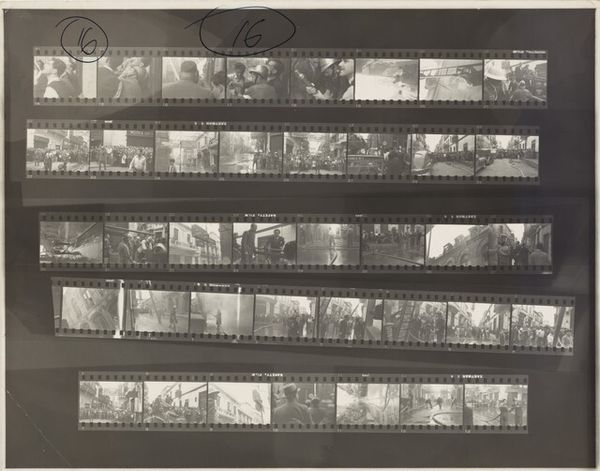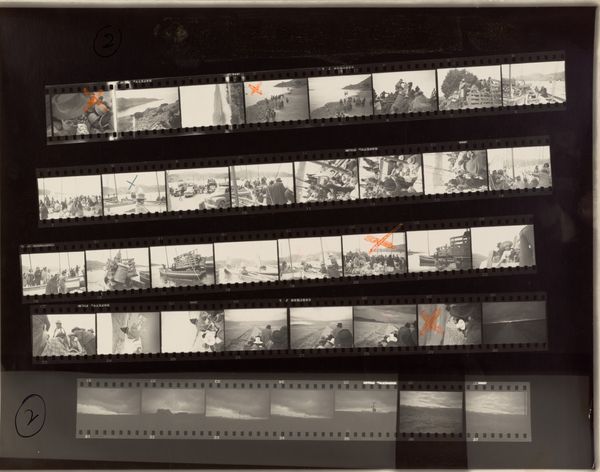
photography, gelatin-silver-print
#
film photography
#
landscape
#
street-photography
#
photography
#
photojournalism
#
gelatin-silver-print
#
monochrome photography
#
modernism
#
monochrome
Dimensions: sheet: 27.8 x 35.4 cm (10 15/16 x 13 15/16 in.)
Copyright: National Gallery of Art: CC0 1.0
Curator: What catches my eye about Robert Frank's "Peru 13" is its gritty, almost documentarian feel, a kind of raw intimacy with the landscape and its people. It feels unplanned and immediate. Editor: I can see that. Frank shot this photograph, a gelatin-silver print, in 1948. Looking at it as a set of stills, presented in strips of film, for me the layout evokes a kind of visual diary of his travels. Each image a specific day and moment experienced within a specific geographic setting. Curator: I'm immediately drawn to the imagery itself. The ruins, the cityscapes, even the way he captures light seems laden with layers of memory and cultural continuity. See the way certain shots mimic architectural portals. Are those intentional symbolic markers, leading us from one reality into another? Editor: I suspect it reflects a particular mid-century perspective: a modernist's eye encountering ancient structures. Note that juxtaposition of crumbling walls against, presumably, contemporary daily life? What does that say about how postwar audiences were meant to engage with the past and these places, how memory should be regarded within modernity? Curator: Perhaps the arrangement of these stills, akin to scattered fragments of history or glimpses of memory, offers something crucial here. He’s not presenting a neat linear narrative. Rather, what feels most potent are these jumbled shards, encouraging us to form our own links across time and space. Look at how certain motifs, doorways and windows, reoccur! Editor: Good point. But what do we, as contemporary viewers, bring to these readings? "Peru 13," frozen in time, and experienced by audiences 75 years after its making… isn't its symbolism equally contingent on the social history and political context in which we find ourselves today? How have images of "Peru," and its cultures, changed—or not changed— in popular representation in recent decades? Curator: An excellent question. It’s hard to dismiss our own interpretive frameworks. Nevertheless, this feels especially powerful because it lacks the airbrushed romanticism typical of so many travel photos from that period. The realism gives it a raw vulnerability that allows me, even now, to better connect to its cultural aura. Editor: Absolutely. Frank’s framing grants it a particular lasting poignancy—these silent pictures from the past asking quiet questions that time continues to revisit and reframe.
Comments
No comments
Be the first to comment and join the conversation on the ultimate creative platform.
